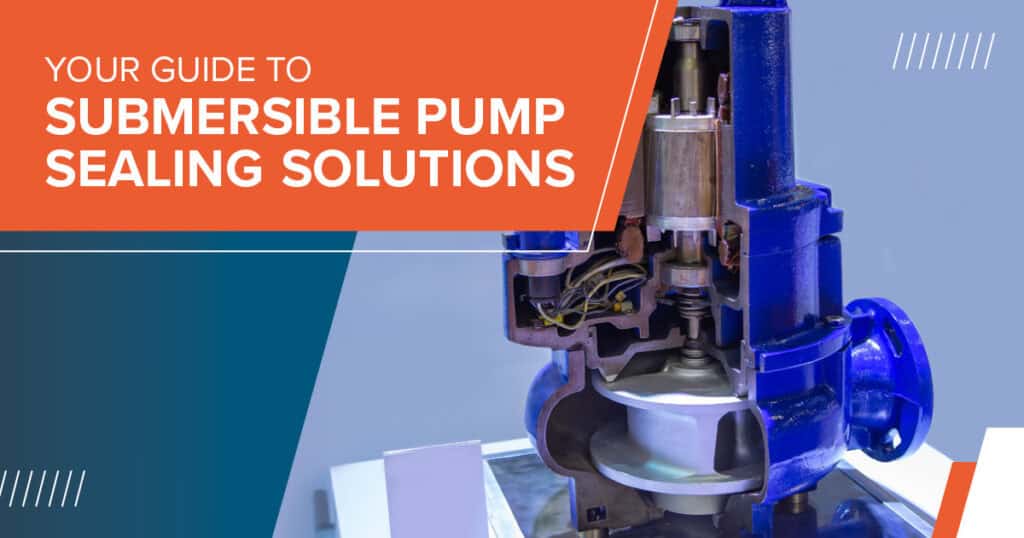Submersible pumps operate in challenging environments, often submerged in water or other fluids. This is why reliable sealing solutions are so crucial. Proper seals prevent water ingress to ensure pump longevity and optimal performance. In this article, we will cover the key aspects of submersible pump sealing solutions, including types of seals, common materials, and best practices for barrier fluid selection.
Types of Seals for Submersible Pumps
Submersible pumps typically use mechanical seals because of their ability to maintain a tight seal under high pressure. Dual mechanical seals are commonly used in submersible pumps. They consist of an upper and lower seal. The chamber between the two seals is filled with a barrier fluid that acts as a buffer, preventing water from entering and lubricating the seals to minimize friction and wear.
Mechanical seals can be categorized into single or double configurations:
- Single Seal—Single seals are ideal for less demanding applications. They can be effective in submersible pumps but require regular maintenance to ensure consistent performance.
- Double Seal—Double seals are generally better suited for harsh environments, making them a preferred choice for a majority of submersible pump applications.
Materials for Submersible Pump Seals
The choice of material for seals is essential, as it must withstand contact with the pumped fluid and resist wear and tear. The material choice should align with the type of fluid being pumped, operating temperature, and environmental factors. Common submersible pump seal materials include:
- Elastomers—Materials like Viton or nitrile are commonly used for their flexibility and chemical resistance.
- Ceramics and Silicon Carbide—These materials are highly durable and offer superb resistance to abrasion. They are typically ideal for pumping applications with particulates.
- Carbon—Often paired with harder materials, carbon provides excellent lubricity and reduces friction.
Selecting the Right Barrier Fluid
Barrier fluid selection is another critical aspect of maintaining seal integrity in submersible pumps. Barrier fluids serve as a lubricant and coolant, ensuring the seals remain effective even under continuous operation. When choosing a barrier fluid, consider compatibility with seal materials and the risk of fluid contamination. Consult the OEM guidelines or work with pump management experts who can identify the most suitable options for your specific application. The most common barrier fluid options include:
- Turbine Oils—These oils provide terrific lubricity and flow properties at a range of temperatures. An ISO 32 viscosity is generally recommended for submersible pumps operating at moderate temperatures.
- Glycol Solutions—Ethylene or propylene glycol solutions offer good heat transfer properties and are suitable for pumps operating in food processing or environments where fluid contamination must be minimized.
Best Practices for Maintaining Submersible Pump Seals
Proper maintenance is vital to the longevity of submersible pump seals. Regularly check the seal chamber for correct fluid levels. Overfilling or under-filling can cause seal failure. Always follow OEM specifications for fluid types and filling procedures to avoid damaging the seals. By selecting the best seals and maintaining them properly, you can ensure reliable operation and extend the lifespan of your submersible pumps.
For all your mechanical seal selection, installation, maintenance, and repair needs, talk to the pump specialists at DXP Pacific. Whether you have a submersible pump operation or any other type of industrial, municipal, agricultural, or mining pump system that needs optimizing, we can provide the professional services you require.

